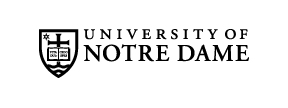Newswise — Teachers, parents, students and officials in K-12 schools across the country are beginning the academic year by stepping into the unknown. The Centers for Disease Control and Prevention recently reported that children from birth to age 17 account for 7.3 percent of COVID-19 cases in the United States — and warned that “the number and rate of cases in children in the United States have been steadily increasing from March to July.”
School districts throughout Indiana are reopening under varying approaches and policies — and many have had to be agile with their plans. A new study by researchers at the University of Notre Dame cautions that K-12 schools reopening to full capacity with little to no compliance of safety measures such as face masks could drive infections up to an estimated 2.49 million in Indiana alone, with more than 9,000 deaths by the end of 2020. The state’s total population currently stands at more than 6.7 million, according to the U.S. Census Bureau.
“Without interventions like face masks and reduced capacity in classrooms, the threat of infection in the state alone is very concerning,” said Alex Perkins, associate professor in the Department of Biological Sciences, an expert in infectious disease epidemiology and population biology and a lead of the study. “Our objective was to examine how interventions within K-12 schools could impact the COVID-19 burden throughout the state.”
Key points from the study:
- Perkins and his team compiled data including reported cases, deaths, hospitalizations and tests within the state.
- The team simulated transmission of COVID-19 within the state. A representative model of K-12 students, teachers and families were each studied separately.
- Transmission rates were tested against multiple scenarios — including school capacity set at 50, 75 and 100 percent and face mask compliance at 50, 75 and 100 percent.
- In the study, schools opening at full capacity without the use of face masks led to 2.49 million infections and 9,117 deaths.
- With fully remote instruction, shelter-in-place practices and face mask compliance within communities maintained at mid-August levels, researchers estimate 19,527 cases of infection and 360 deaths through the remainder of the year.
- Schools opening at 50 percent capacity that adhered to high compliance of face mask use achieved similar results to projections of fully remote instruction.
- Scenarios where schools operated at high levels of capacity with low face mask compliance saw the risk of death higher for teachers and family members by 227- and 266-fold respectively.
The study projected outcomes taking place between the last two weeks of August through the end of the year. While the study accounted for variables including asymptomatic infection and differing levels of susceptibility between children and adults, Perkins said the results are a snapshot of the full spectrum of scenarios that could play out in Indiana schools this fall.
“There are some scenarios we did not examine in this study,” Perkins said, such as differences between groups attending classes in-person or remotely, the different methods of modularization employed by various schools and school districts, and testing strategies.
“Similar to what we’re seeing across the country, the state’s approach is a patchwork of policies that change from school district to school district,” Perkins said. “What these results show clearly, however, is how face mask compliance and reducing capacity in schools could significantly impact the burden of COVID-19 on Indiana residents as their children return to school.”
Perkins is an affiliated member of Notre Dame’s Eck Institute for Global Health and Environmental Change Initiative.
Co-authors of the study include Carly Barbera, Sean Cavany, Alan Costello, Guido España, Anita Lerch, Sean Moore, Rachel Oidtman, Marya Poterek, Quan Tran Minh and Annaliese Wieler, all at Notre Dame.
